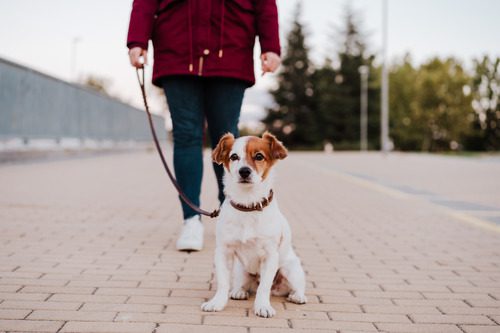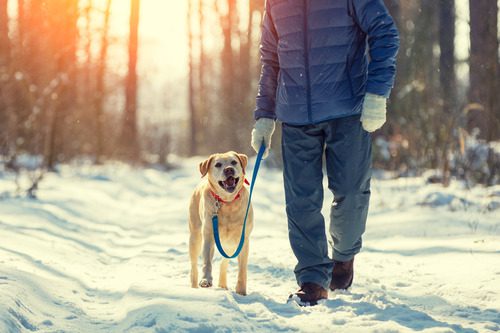Can Dogs Find Their Way Home?
The incredible stories of dogs traveling vast distances to find their way back home have captured the hearts and minds of pet owners for generations. These stories often raise the question, “Can dogs truly find their way home?” In this article, we will explore the science behind a dog’s homing ability, the factors that influence their success, and what you can do to help your lost dog return home safely in Plymouth Meeting, PA.

Understanding a Dog’s Homing Ability
Dogs possess an impressive array of sensory abilities that can help them navigate their environment and potentially find their way home. Some of these abilities include:
Sense of Smell
A dog’s sense of smell is vastly superior to that of humans, with up to 300 million olfactory receptors compared to our mere 5 million. This heightened sense of smell allows dogs to pick up scent trails and follow them over long distances.
Hearing
Dogs have a highly developed sense of hearing, capable of detecting sounds at much higher frequencies than humans. This can help them pick up auditory cues, such as familiar sounds or voices, to guide them back home.
Spatial Awareness
Dogs have a natural ability to develop mental maps of their environment, which can help them navigate back to familiar locations.
Factors That Influence a Dog’s Ability to Find Their Way Home
While dogs have remarkable sensory abilities that can aid in finding their way home, several factors can influence their success:
Distance
The greater the distance between the dog and their home, the more challenging it becomes to navigate back. Dogs are more likely to find their way home if they are lost within a familiar area.
Environment
A dog’s homing ability can be influenced by the environment they are lost in. Urban environments, for example, may be more challenging to navigate due to increased human activity, noise, and obstacles.
Breed and Individual Traits
Some dog breeds, such as scent hounds, are naturally better equipped to follow scent trails and navigate their environment. Additionally, individual traits, such as intelligence, temperament, and previous experience, can also impact a dog’s ability to find their way home.
Time
The longer a dog is lost, the more difficult it may be for them to find their way back home. Over time, scent trails can dissipate, and environmental conditions can change, making it more challenging for dogs to navigate.
What You Can Do to Help Your Lost Dog Return Home
In the unfortunate event that your dog becomes lost, there are several steps you can take to increase the chances of a happy reunion:
Microchip and ID Tag
Ensure your dog is microchipped and wears a collar with an ID tag containing your contact information. This can help reunite you with your dog if someone finds them.
Search the Immediate Area
Begin by searching the area where your dog was last seen. Dogs often follow familiar routes, so check nearby parks, trails, and other locations your dog is accustomed to visiting.
Alert Your Local Community
Notify your neighbors, local animal shelters, and veterinarians about your lost dog. Share information about your dog’s appearance, temperament, and any unique identifying features.
Use Social Media and Online Resources
Utilize social media platforms and online lost pet databases to spread the word about your missing dog. Post photos, descriptions, and contact information to help others identify your dog and facilitate a reunion.
Leave Familiar Scents Outside
Place items with your dog’s scent, such as their bed or toys, outside your home. This can help attract your dog back to your property if they are nearby.
Don’t Give Up
Persistence is key when searching for a lost dog. Continuously update and check online resources, contact shelters and veterinarians, and maintain communication with your local community. Remember that dogs have been known to return home after being lost for extended periods, so don’t lose hope.
Additional Tips and Considerations for Lost Dogs
Read on to learn more tips:
Create a Lost Dog Flyer
Design a clear and informative flyer with your dog’s picture, a detailed description, and your contact information. Distribute these flyers in your neighborhood, at local businesses, and post them on community bulletin boards. The more people aware of your lost dog, the higher the chances of someone spotting and reporting their location.
Consult with a Pet Detective or Tracking Dog Team
In some cases, you may want to enlist the help of a professional pet detective or a tracking dog team to search for your lost pet. These professionals have experience and specialized skills in locating lost animals and can be particularly helpful in challenging situations or if you have exhausted other search methods.
Monitor Local Shelters and Rescues Regularly
Continuously check with local animal shelters and rescues, as lost dogs may be brought in by good Samaritans or picked up by animal control. Visit shelters in person to verify if your dog has been brought in, as descriptions over the phone or online may not always be accurate.
Utilize Trail Cameras
If you live in a rural or wooded area, consider setting up trail cameras in locations where your dog may be likely to pass. These cameras can capture images of your dog and help you determine their whereabouts and movement patterns.
Engage Your Community for Search Parties
Organize search parties with friends, family, and neighbors to cover more ground in your search efforts. The more people involved in the search, the higher the chances of finding your lost dog.
Offer a Reward
In some cases, offering a reward for the safe return of your lost dog can motivate people to actively search for and report sightings of your pet. Ensure that the reward is clearly stated on your lost dog flyers and online postings.
By taking these additional steps, you can further increase the chances of finding your lost dog and reuniting with your beloved pet. Remember that every situation is unique, and the methods that work for one lost dog may not be as effective for another. Stay persistent, open to new strategies, and keep a positive outlook as you search for your missing companion.
Contact the Village Vets- Plymouth Meeting for More Information
While there is no guarantee that a lost dog will find their way home, their remarkable sensory abilities and natural instincts can significantly improve their chances. Factors such as distance, environment, breed, individual traits, and time can all influence a dog’s ability to navigate back to their family. As a pet owner, you can help increase the likelihood of a happy reunion by taking preventative measures, such as microchipping and providing an ID tag, and taking immediate action if your dog becomes lost. By maintaining a proactive approach, staying persistent, and utilizing the resources available, you can give your lost dog the best possible chance of finding their way home. For more information on if dogs can find their way back home, contact The Village Vets Plymouth Meeting by calling (484) 820-1700.
Recent Posts
About The Village Vets
The Village Vets of Plymouth Meeting offers excellent service to clients in a comfortable, friendly atmosphere. To learn more about us and how we can better serve you and your pet here in Plymouth Meeting, PA, click the button below.
Share This Post
Recent Posts
About The Village Vets
The Village Vets is a network of three animal hospitals based in Atlanta, GA and the surrounding area. We offer honest, excellent service to our clients in a comfortable, friendly atmosphere. To learn more about our locations and how we can better serve you and your pet, click the button below.




